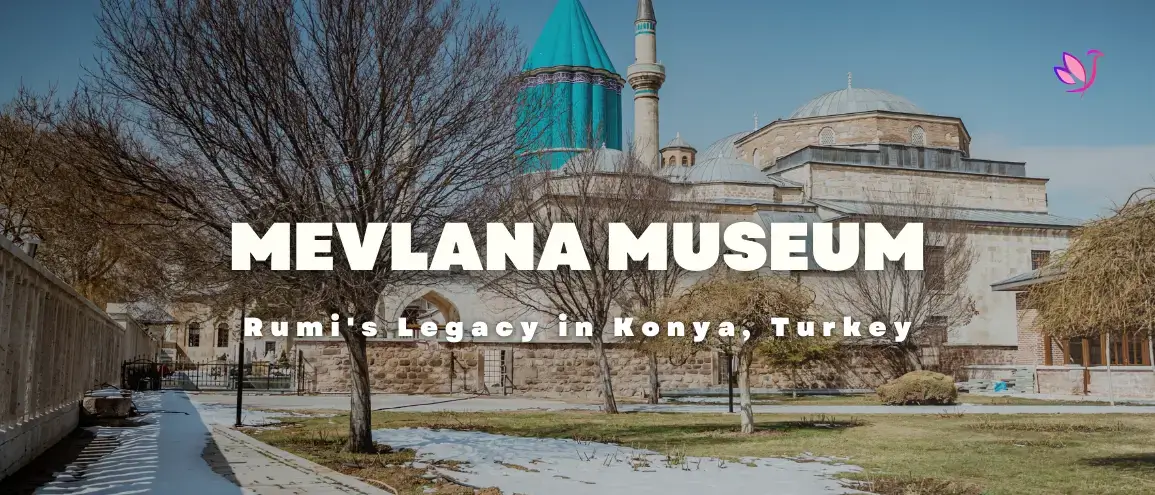Mevlana Museum

Discover the Mevlana Museum: A Spiritual and Cultural Gem in Konya, Turkey
The Mevlana Museum, located in the heart of Konya, Turkey, is one of the country's most revered cultural and spiritual landmarks. Dedicated to the life and teachings of Mevlana Jalaluddin Rumi, the 13th-century Sufi mystic, poet, and philosopher, the museum attracts millions of visitors each year. With its stunning architecture, rich history, and profound spiritual significance, the Mevlana Museum is a must-visit destination for anyone exploring Turkey's cultural heritage.
A Glimpse into the History of the Mevlana Museum
The Mevlana Museum was originally the lodge of the Mevlevi Order, also known as the Whirling Dervishes, a Sufi order founded by the followers of Rumi. After Rumi's death in 1273, his tomb became a place of pilgrimage, and the site was transformed into a museum in 1926.
The museum's iconic green-tiled dome is a symbol of Konya and a testament to the region's architectural brilliance. The complex includes a mosque, a dervish lodge, and a cemetery, all of which reflect the spiritual and cultural legacy of Rumi and the Mevlevi Order.
Top Attractions at the Mevlana Museum
-
Rumi's Tomb
The centerpiece of the museum is the tomb of Mevlana Jalaluddin Rumi, a magnificent structure adorned with intricate calligraphy and decorative tiles. The tomb is a place of deep spiritual significance, and visitors often pause here to reflect and pay their respects. -
The Semahane (Ritual Hall)
The Semahane is the hall where the Whirling Dervishes performed their famous Sema ceremony, a spiritual dance symbolizing the soul's journey toward truth and love. The hall's serene atmosphere and beautiful architecture provide a glimpse into the mystical practices of the Mevlevi Order. -
The Dervish Cells
The museum features a series of small rooms that once served as living quarters for the dervishes. These cells offer insight into the simple and ascetic lifestyle of the Mevlevi followers. -
The Manuscripts and Artifacts
The museum houses an impressive collection of manuscripts, including original works by Rumi, as well as historical artifacts such as musical instruments, clothing, and ceremonial objects. These exhibits provide a deeper understanding of Rumi's teachings and the cultural heritage of the Mevlevi Order. -
The Courtyard and Fountains
The museum's courtyard is a peaceful space adorned with fountains and lush greenery. It serves as a tranquil retreat where visitors can relax and soak in the spiritual ambiance of the site.
Tips for Visiting the Mevlana Museum
-
Dress Modestly: As a place of spiritual significance, visitors are expected to dress modestly. Women should cover their heads with a scarf, and both men and women should avoid wearing shorts or sleeveless tops.
-
Visit Early or Late: To avoid crowds and enjoy a more peaceful experience, plan your visit for early morning or late afternoon.
-
Join a Guided Tour: Consider joining a guided tour to gain deeper insights into the history and significance of the museum and its exhibits.
-
Attend the Sema Ceremony: If your visit coincides with the annual Mevlana Festival (held in December), don't miss the opportunity to witness the mesmerizing Sema ceremony performed by the Whirling Dervishes.
Conclusion
The Mevlana Museum is a spiritual and cultural treasure that offers visitors a unique opportunity to connect with the teachings of Rumi and the rich heritage of the Mevlevi Order. Whether you're exploring its stunning architecture, reflecting at Rumi's tomb, or learning about Sufi traditions, a visit to the Mevlana Museum is an unforgettable experience. Plan your trip to Konya today and immerse yourself in the timeless wisdom and beauty of this iconic site. Make the most of your trip to Konya with our Konya Daily tours.